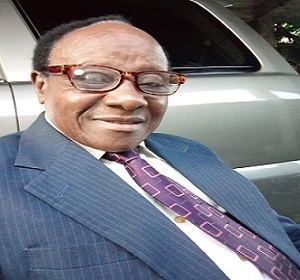
Hello! I'm
Professor
Ohiri Innocent
Author, Writer, Actor, LecturerOne Man. One Mission. Can He Go Beyond?One Man. One Mission. Can He Go Beyond?
Television Theatre and Its Challenges
AMA: Journal of Theatre and Cultural Studies
Vol.4, No 1, 2009, (47-62)
THE TELEVISION THEATRE AND ITS CHALLENGES FOR STAGE-ORIENTED TELEVISION DIRECTORS AND
DESIGNERS
Innocent Ohiri,
Creative Arts Department,
University of Port Harcourt,
Port Harcourt.
Abstract
Stage productions, in recent time, have low patronage. This is because of a good number of reasons which include increasing cases of insecurity (especially at night), and the influence of television and video films - hence the influx of stage directors and designers into the television and video film industries. This influx has created new problems and challenges for production staff and the media world. This paper appraises these challenges and makes suggestions on how they can be met.
Introduction
The insecurity prevalent in the present decade has affected the growth of stage theatre practice thereby promoting the abandonment of the stage for the more lucrative television theatre. Political killings, cultism and the menace of rampant armed robbery have reduced the patronage of stage theatre and made it virtually impossible for live theatres to have a full house. Television and video films have impacted very negatively on stage theatre. To worsen the situation, the governments — local, state and federal do not seem to be bothered by the declining of an industry that provides them with command performances.
While the government has established media houses in all the states of the federation, no effort has been made to erect standard theatre buildings in the States. Even the National Theatre that had in the past given an impression of positive government interest or concern does not seem to be receiving the kind of attention it was given in the 70s and 80s. The performances of the National Troupe, which most people had hoped would go into a meaningful talent hunt or establish outreach centres in the States, has fallen below the expectations of many Nigerians.
Furthermore, the Councils for Arts and Culture established in the states have not impacted meaningfully on the cultural lives of the people. They are poorly funded and consequently, do not extend their influences into the rural communities as expected. Other organizations that promote live theatre are not being encouraged to strive harder. The Departments of Theatre Arts in the universities and tertiary institutions are poorly funded. They lack the necessary equipment and, in some cases, are poorly staffed because of a ‘man-made-and-perpetuated’ embargo on employment. These situations are quite problematic and call for urgent solution.
As a result of this neglect of stage theatre and its resultant dwindling state, television theatre has, in recent times, attempted to ‘overshadow’ the stage theatre which had an earlier beginning. The term ‘television theatre’ is used in this work to mean ‘a recorded stage theatre’ meant for the information, education and entertainment of a television audience. This meaning is predicated on the fact that performances transmitted on the television are perfected on the stage, which could be of arena, proscenium or thrust configurations, before the recording with a camera. The term ‘television theatre’, therefore comprises all theatrical activities shown on the television screen. Television programmes, film clips and video films transmitted on television come under television theatre.
Most stage directors and designers have, because of this dilemma of stage theatre, ‘crisscrossed’ into television theatre. Many have gone into the much younger, but more lucrative, video film industry to make more money. This ‘carpet-crossing’ has created so many challenges for these stage orientated directors and designers. Their television programmes do not quite meet the required standards because of many carryover effects from the stage. Numerous stage standards, orientations and conventions are identified in their television programmes in the area of blockings, projections, costumes, lighting and the use of colour. Their imperfections in the areas that are strictly native to television production are quite glaring. This is a disturbing and challenging situation to both the practitioners and the industry. Owing to the enormity of the challenges, it has become imperative to examine these challenges and recommend, for the directors and designers, ways of improving the status quo